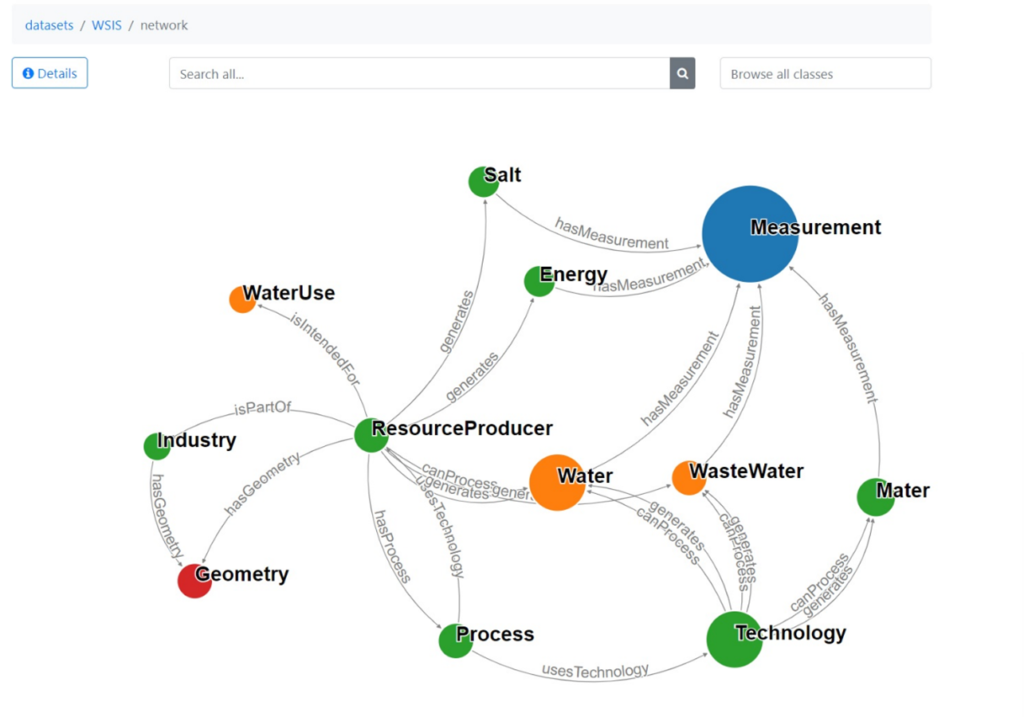Tools
Ontology
What is the Ontology?
An ontology is a formal representation of concepts, relationships, and knowledge specific to a particular domain, in this case “water management and industrial symbiosis”. It defines and structures the key elements related to optimize water use, sustainability and collaboration in industrial processes. This ontology facilitates the establishment of informational links between industries and processes, allowing for a common vocabulary to understand and share information about the potential reusability of resources such as water and materials.
Why do we need Ontology?
We need an ontology for several purposes:
- Information Integration: It enables the integration of information from various sources and industries, allowing for a better understanding of resource-sharing possibilities and their impacts.
- Common Vocabulary: It establishes a common vocabulary for discussing and sharing information, promoting consistency and clarity across industries.
- Process Interlinking: It represents process interconnections in terms of different resources, enhancing the understanding of how resources can be shared.
- Alignment with KPIs: It aligns with key performance indicators (KPIs) related to the nexus of water, energy, food, climate, and environment, facilitating data understanding at different levels.
How do we support?
The ontology has been constructed following an agile semantic development methodology called SAMOD. This methodology facilitates ontology construction, documentation, and publication. The ontology has been made available for reuse and extension.
Guidance Document
All the information about the semantic development methodologies, challenges, requirements and use-cases relevant for the WSIS ontology creation are depicted in the following document.
Further information & Contact
If you would like more information about the ULTIMATE online tools, please reach out to Eloy Hernández Busto from Eurecat.
Email: eloy.hernandez@eurecat.org
